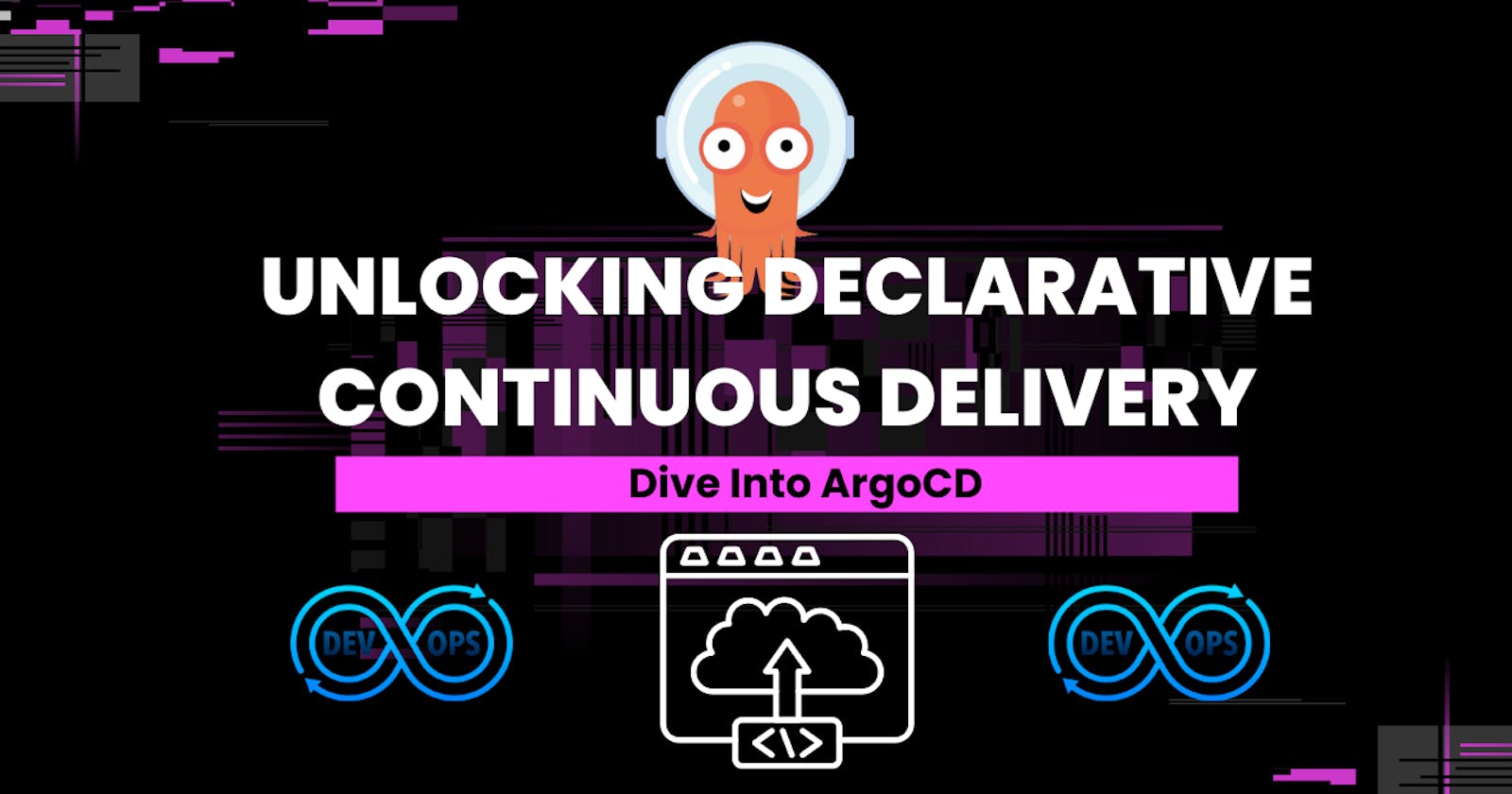Introduction
In the fast-paced world of Kubernetes, managing application deployments efficiently is crucial. Argo CD stands out as a powerful tool that simplifies the process, enabling declarative continuous delivery with ease. This blog will provide a hands-on exploration of Argo CD's core features, including a detailed look at the Declarative Continuous Delivery pipeline, illustrated with a practical example.
Exploring Argo CD
Argo CD revolutionizes continuous delivery in Kubernetes by:
Declarative Configuration: Define the desired state of your applications using YAML manifests stored in Git repositories. Argo CD ensures that the cluster matches this desired state, simplifying deployment management.
GitOps Workflow: Argo CD embraces the GitOps workflow, leveraging Git repositories as the single source of truth for both infrastructure and application configurations. This approach promotes version control, collaboration, and transparency in deployment processes.
Automated Synchronization: Continuously monitor Git repositories for changes to application configurations. Argo CD automatically synchronizes the cluster with the updated state defined in the Git repository, eliminating the need for manual intervention and ensuring consistency.
Application Rollback: In the event of deployment errors or issues, Argo CD provides a robust rollback mechanism. Users can revert to previous application versions seamlessly, maintaining stability and reliability in production environments.
Declarative Continuous Delivery Pipeline with Argo CD
Now, let's take a closer look at the Declarative Continuous Delivery pipeline facilitated by Argo CD, illustrated with a practical example:
Deploying a Simple Application
Suppose we have a simple application consisting of a deployment and a service defined in Kubernetes manifests. We'll store these manifests in a Git repository and configure Argo CD to automatically deploy and synchronize the application based on changes to the repository.
Application Manifests
# deployment.yaml
apiVersion: apps/v1
kind: Deployment
metadata:
name: myapp
spec:
replicas: 3
selector:
matchLabels:
app: myapp
template:
metadata:
labels:
app: myapp
spec:
containers:
- name: myapp
image: myapp:v1
ports:
- containerPort: 80
# service.yaml
apiVersion: v1
kind: Service
metadata:
name: myapp-service
spec:
selector:
app: myapp
ports:
- protocol: TCP
port: 80
targetPort: 80
Git Repository Structure
Organize our Git repository to store these manifests:
myapp/
├── deployment.yaml
└── service.yaml
Argo CD Configuration
Configure Argo CD to manage our application:
# argocd-app.yaml
apiVersion: argoproj.io/v1alpha1
kind: Application
metadata:
name: myapp
spec:
destination:
server: 'https://kubernetes.default.svc'
namespace: default
source:
repoURL: 'https://github.com/your-username/myapp.git'
path: '.'
targetRevision: HEAD
project: default
syncPolicy:
automated:
prune: true
selfHeal: true
Applying Configuration
Apply the Argo CD application configuration to your Kubernetes cluster:
kubectl apply -f argocd-app.yaml
Conclusion
In this example, we've demonstrated a declarative continuous delivery pipeline using Argo CD. We defined our application's desired state in Kubernetes manifests, stored them in a Git repository, and configured Argo CD to automatically synchronize and deploy the application based on changes to the repository. This approach ensures consistency, repeatability, and automation in the deployment process, embodying the principles of declarative continuous delivery.
If you found this guide valuable, don't forget to like and share it with your peers. Stay tuned for more insightful content by following me for future updates. Together, let's continue to unlock the full potential of Argo CD and empower the Kubernetes community with advanced deployment strategies and best practices. Thank you for reading!

